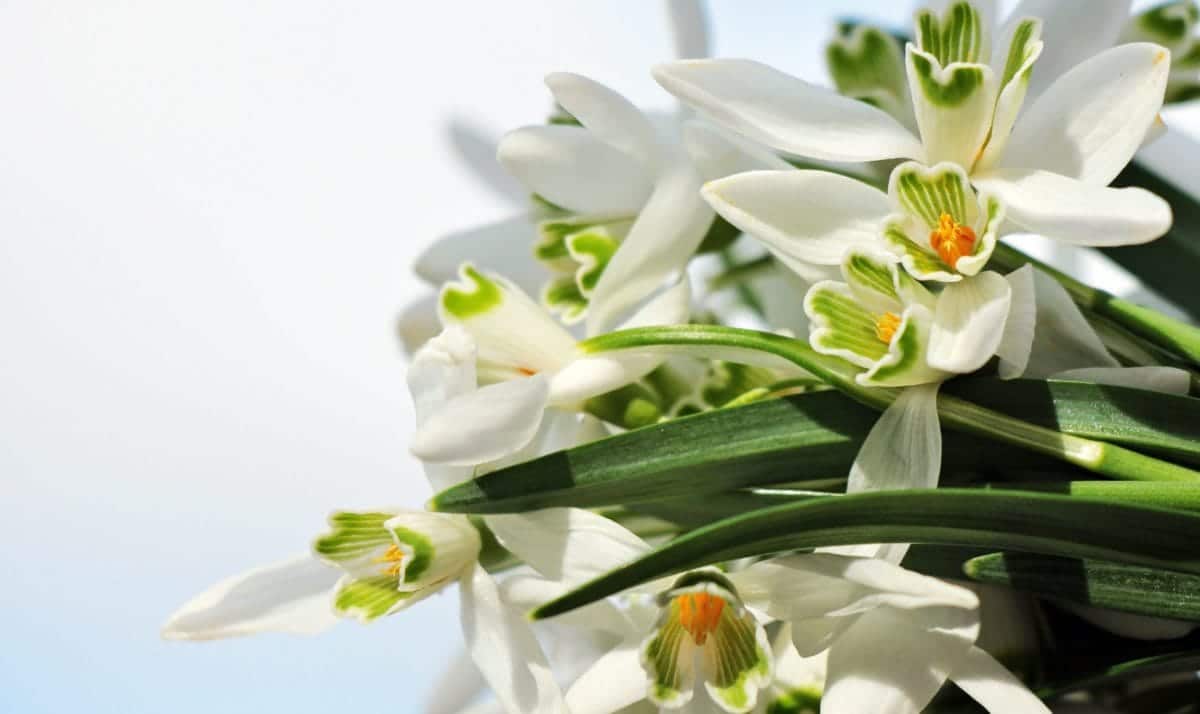
When the humidity is high we certainly have a problemNot only because it can make us feel colder or hotter regardless of the temperatures, but also because it can pose a risk to our health by increasing the possibility of suffering from respiratory diseases such as asthma or bronchitis; And that's not to mention the damage it causes to the home itself, ranging from "simple" but rather ugly black stains on the wall, to unpleasant odors or falling paint.
Fortunately, there are a number of plants that absorb moisture. They are not a panacea, but it is interesting to grow them so that the environment is not so humid.
Bromeliad fasciata
The bromeliad fasciata is an epiphytic plant that lives in Brazil, in the tropical forest. Its scientific name is Aechmea fasciata, and develops a rosette of green and whitish green tapered leaves from the center of which a pink inflorescence sprouts in spring-summer. Lives very well in humid environmentsIn fact, it needs it, so if the humidity is high in your home, do not hesitate to get one to help you dry the environment a bit. Of course, put it in a bright area (but without direct light), and in a pot with pine bark, pumice (for sale here) or similar.
Carnation of the air

Image - Wikimedia / Maria Fernanda Vazquez Acosta
The carnation of the air is a type of bromeliad whose scientific name is tillandsia aeranthos. It is an epiphytic plant that lives in the tropical forests of America. Through its leaves it absorbs the moisture and nutrients it needs, thanks to structures called trichomes. These cover the entire surface of the sheet, so it is very easy for you to get what you need from the environment. What's more, does not need land: you can grow it in a terrarium, or in a container with pine bark (for sale here) or pumice (for sale here), and spray it with soft water from time to time.
Tape
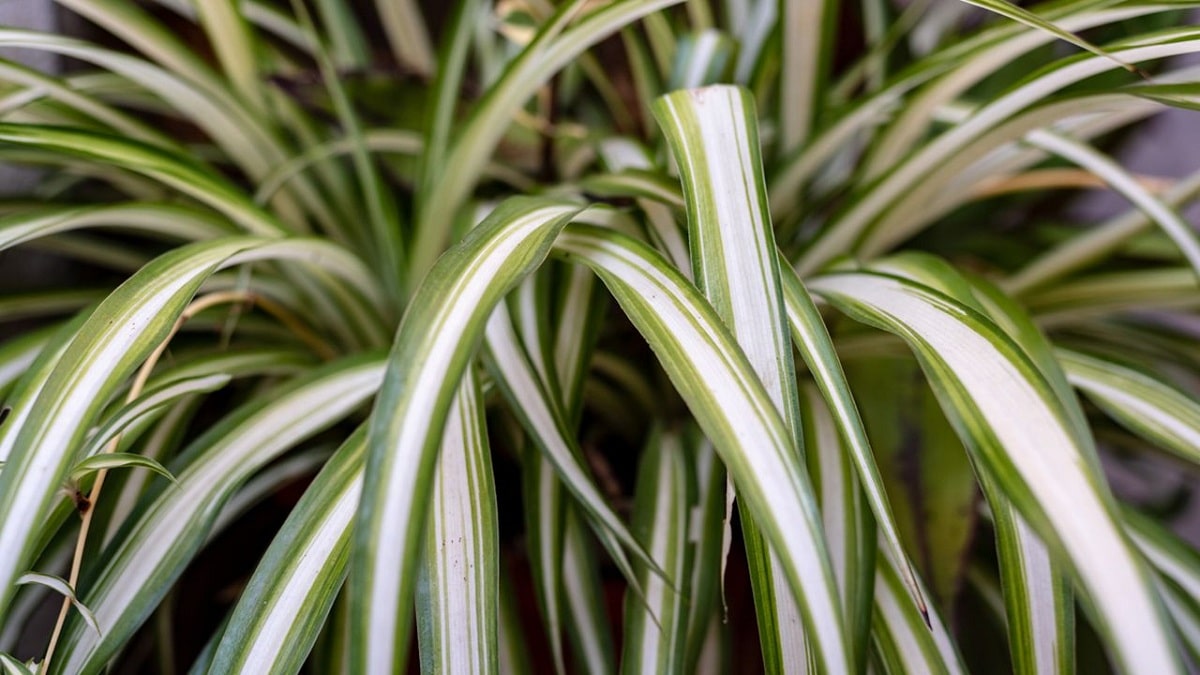
The tape or malamadre is a herbaceous plant that grows up to 30-35 centimeters in height, widely cultivated indoors. Its scientific name is Chlorophytum comosum and is native to South Africa. It has characteristic green or variegated tapered leaves. Apart from absorbing moisture, it also it is one of the plants that removes formaldehyde, which is a substance that at high levels can have very annoying effects, such as watery eyes, skin irritation, coughing or wheezing. Therefore, do not hesitate to decorate your home with it.
Dendrobium
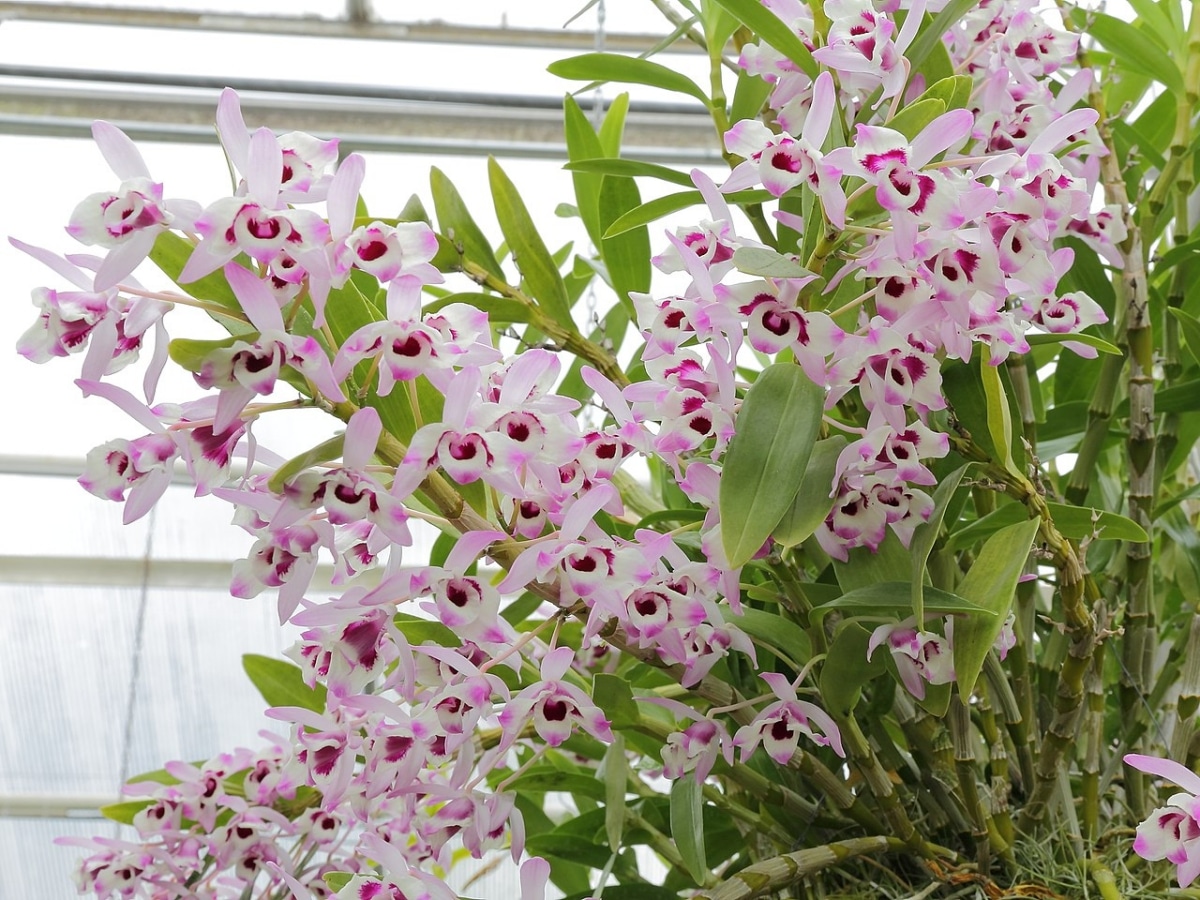
Image - Wikimedia / CT Johansson
All orchids absorb moisture from the air, especially epiphytes that grow on branches, and lithophytes that grow on stones or rocks. But not all of them are easy to maintain. Therefore, we advise you the Dendrobium, who lives in Southeast Asia. Its flowers bloom in spring and it can produce them for up to six months. Needs a lot of light, but never direct. Put it in a clear plastic pot with orchid substrate, and water it with soft water.
Serrucho fern
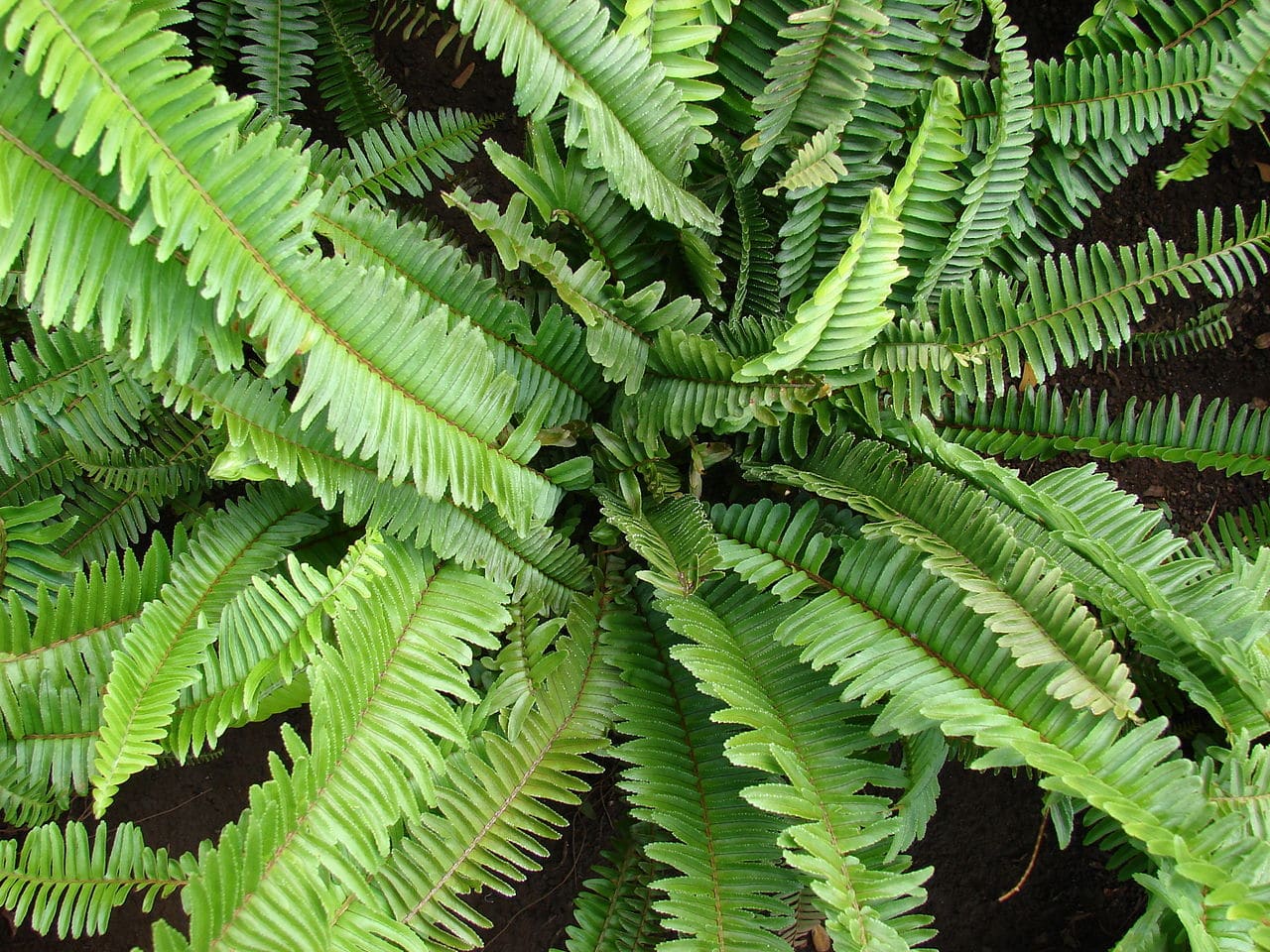
Image - Wikimedia / Forest & Kim Starr
If you like ferns you can consider yourself lucky, as they are very good at absorbing moisture. Because it is one of the easiest to get and grow, we recommend the serrucho fern, whose scientific name is Nephrolepis cordifolia. It is native to Mexico, and has linear-elliptical, green fronds (leaves). It grows up to 40-50 centimeters in height. It does not flower, and it is one of the plants that best adapts to the interior of the home since its light needs are not high.
Ivy
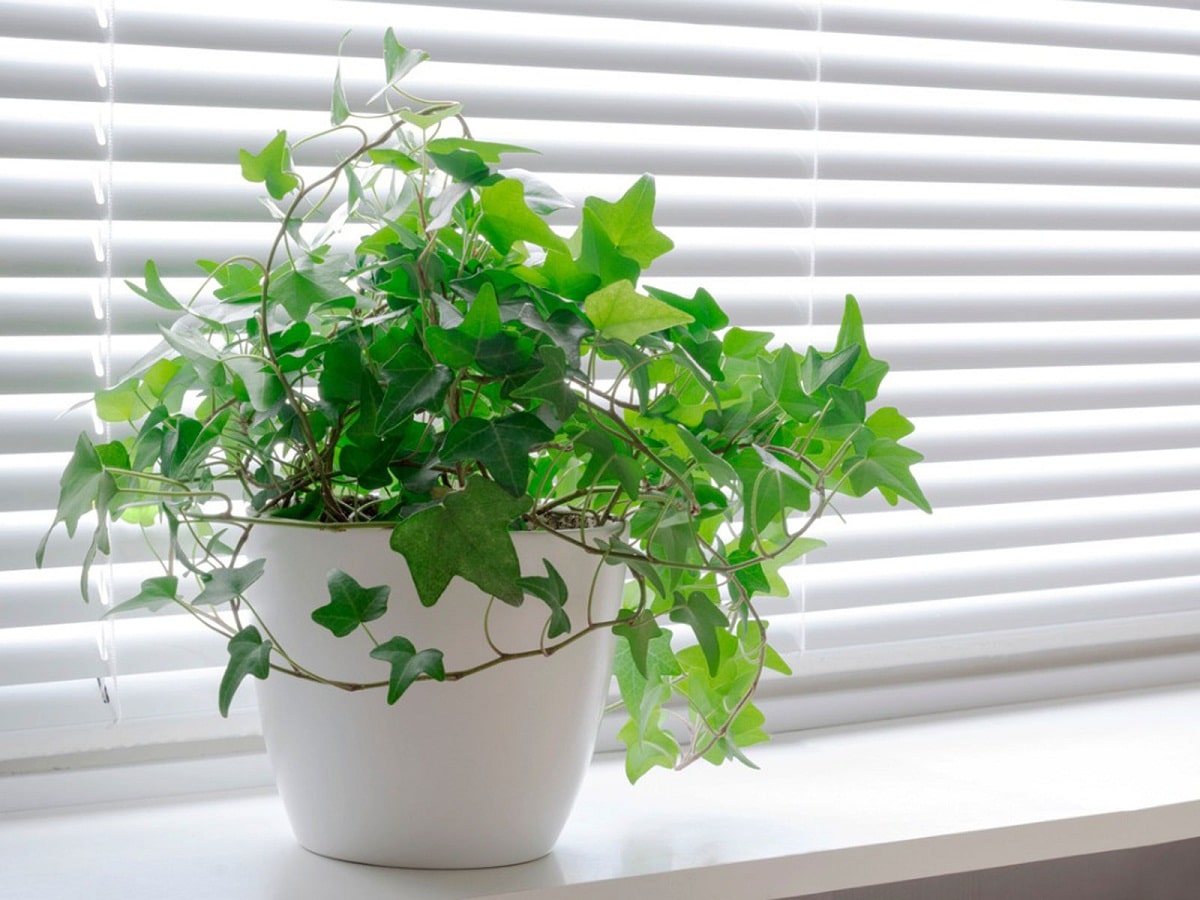
Ivy is a perennial climbing plant with green or variegated leaves depending on the variety whose scientific name is Hedera helix. It is native to the humid forests of Eurasia and North Africa. Grows very fast, but that is precisely why it is interesting to have it inside the house, either in hanging pots, or holding it on the wall (for example, in the frames of a door, or in an arch). You do not need direct light, and you do not need to water immediately. In addition, it supports the cold.
Lily of peace
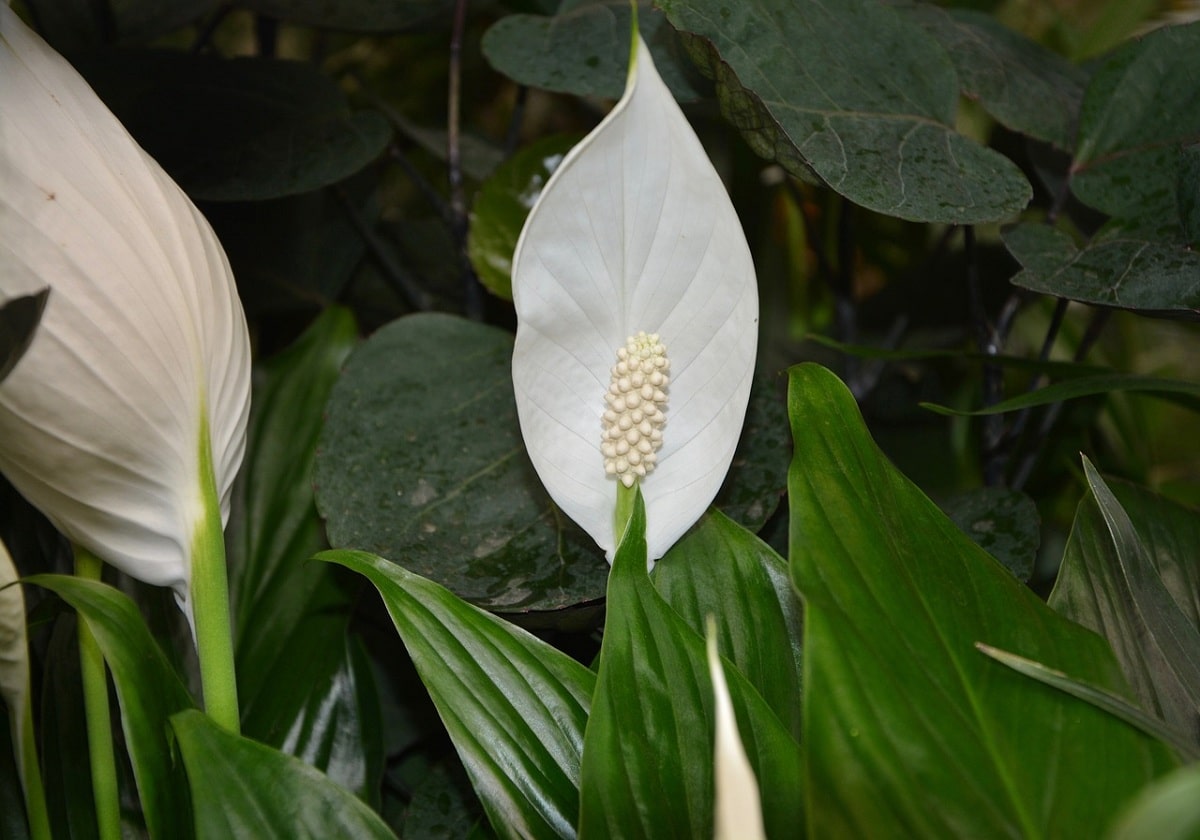
El peace lily, whose scientific name is spathiphyllum wallisii, is a beautiful herbaceous plant native to the tropical forests of Central America that grows up to 40-50 centimeters in height. Its leaves are dark green, which contrasts with the white of its inflorescences when it blooms. To be able to live you need light, but not too much: you can have it in the living room if you wish, or at the entrance of the house. Water it from time to time, ensuring that the soil does not remain dry for long, and thus you will be able to breathe much cleaner air, since it removes many harmful substances such as benzene or acetone.
Living room palm tree
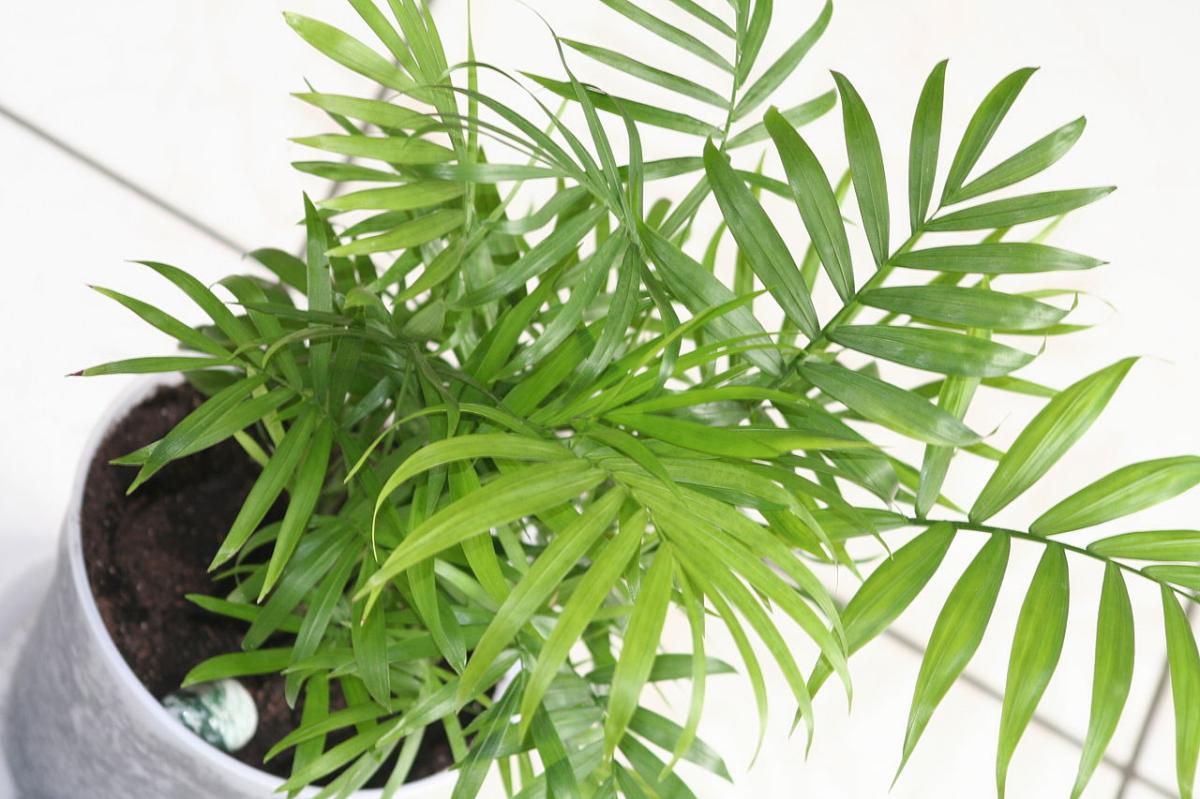
Image - Wikimedia / Pluume321
The hall palm is a plant that grows in Mexico, in the jungles, and always in shade, so its cultivation indoors is quite simple. Its scientific name is Chamaedorea elegans, and is a species of a single trunk (although sold in pots with multiple seedlings) very thin with pinnate leaves. It only grows up to 2 meters in height, so it can be kept in a pot throughout its life. Keep it out of direct light and drafts, and give it moderate watering.
Did you know these plants that absorb moisture? Do you know of others?
